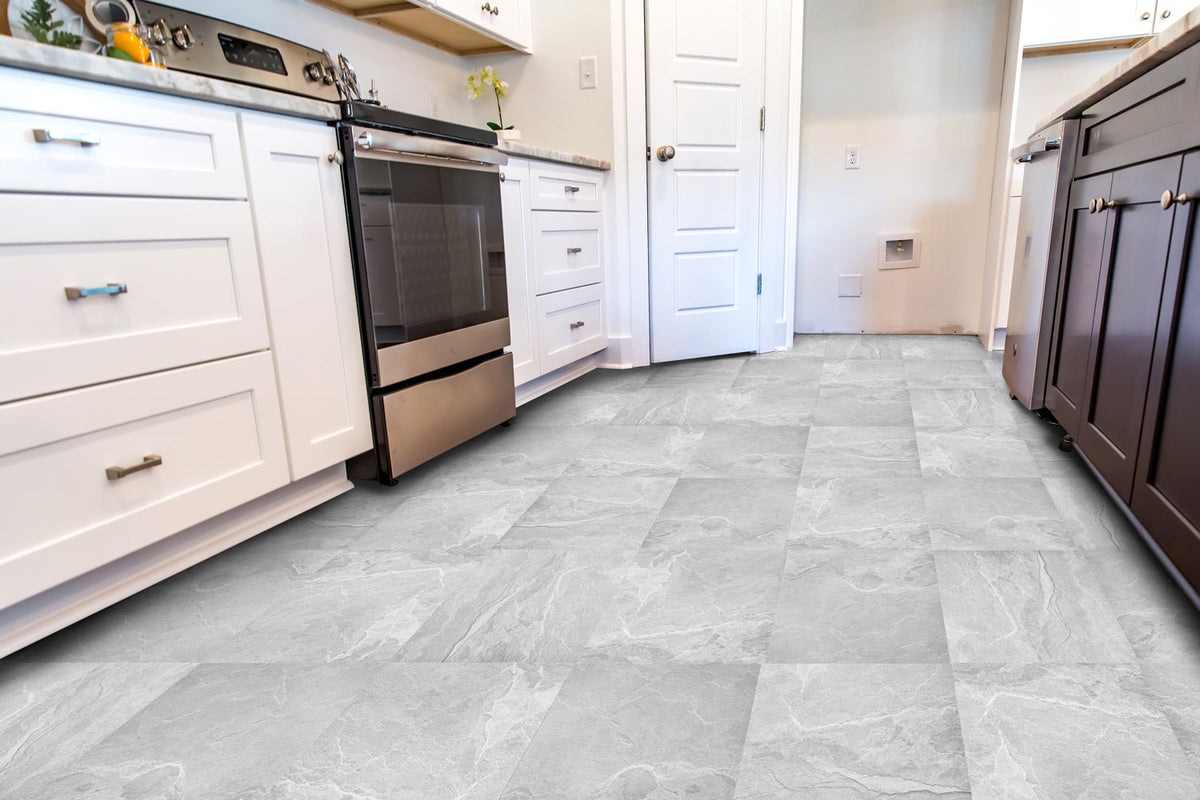
Peel and Stick Vinyl Flooring: All Things to Know Before Buying (2025 Guide)
|
|
Time to read 5 min
|
|
Time to read 5 min
Did you know that searches for 'peel and stick vinyl flooring' soared by 55% this year?
Are you just there on your sofa thinking, “Something's gotta change about my old floors,”? This blog post is for you.
In 2025, more and more homeowners, renters, and Airbnb hosts are turning to peel and stick vinyl flooring. It makes sense because this option is truly budget-friendly, it looks great, and you do not need a contractor (or even a power tool) to install it. It is just that vinyl flooring idea for beginners - you can do it yourself.
But before you fill your cart and start planning that weekend project, I think you should ask, “Is peel and stick vinyl flooring good for my space?” At the end of this blog post, you should be able to answer that without any doubt.
So, we will take a close look at what this flooring really offers: what are the pros and cons? Is it waterproof enough for your bathroom? Will it hold up under your couch or in the heat? What are the must-know installation tips to help you decide?
Keep reading.
The best way to think of peel and stick flooring is to see it as the grown-up version of a giant sticker book; but for your floors.
These tiles or planks are made of the following layers:
Peel and Stick Vinyl Flooring tiles come in tons of styles: light oak, black and white checkerboard, faux marble, name it. Depending on the vibe you love, you can go rustic, modern, minimalist, or bold. With Peel and Stick Vinyl Flooring. it's all fun.
Check their different shades:
Mainly, waterproof vinyl flooring is for bathrooms, but one little secret about these tiles is that you can use them literally anywhere you want a refresh without a huge commitment. They can be used for stylish upgrades in basements, kitchens, and rental units. Just avoid areas with heavy, immovable furniture; that's it!
It wouldn't make sense to sugarcoat it - vinyl flooring has its strengths and a few quirks too.
PROS |
CONS |
Super Affordable ($1–$3 per sq. ft.) |
Shorter Lifespan (usually 2–5 years) |
DIY-Friendly (no glue or tools) |
Not Heat-Resistant (softens over 120°F) |
Totally Waterproof |
Can Be Tricky to Remove (sticky residue) |
Soft and Quiet Underfoot |
Not Great for Heavy Furniture or Loads |
How long does peel and stick flooring last? Peel and stick tiles are not the flooring for your industrial gym or high-heat sunroom, so expect a solid 2–5 years. That depends largely on foot traffic, sun exposure, and surface prep.
Making the right pick starts with purpose and ends with personality. So, if you are wondering how to check vinyl flooring quality, product specs should list all of the below:
- Kitchens & bathrooms: Choose 100% waterproof vinyl with mildew-resistant coating.
- High-traffic areas: Look for wear layers ≥0.5mm to prevent scratches and scuffing.
Note: If you want to get the best vinyl flooring for kitchens, look for anti-slip finishes, too.
People often use vinyl tiles for small spaces to open up tight rooms with the illusion of light and depth:
- Small rooms: Light wood grain and slender planks create a spacious feel.
- Bold or artsy spaces: Try hexagon stone patterns or retro checkerboard tiles.
- Wear resistance: 1500+ revolutions on the Taber test.
- UV resistance: Protects against fading.
- Eco-certifications: Look for FloorScore or GREENGUARD labels (certification).
Prep work might not be the fun part, but it is what makes the difference between a flawless floor and a frustrating redo.
✔ Clean thoroughly: Degrease, dust, and dry your base floor.
✔ Level it out: Fill in any gaps or cracks with floor patches or underlayment pads.
- Utility knife
- Chalk line or laser level
- Floor roller (removes bubbles)
✘ Ignoring expansion joints: Leads to warping in hot months.
✘ Skipping leveling: Results in bumpy or peeling tiles.
Here's your simple 5-step quick method:
Looking up how to install vinyl peel and stick flooring? For visual guidance, this beginner-friendly method in this YouTube installation video saves you from crooked tiles and visible seams. Watch it now.
How do you keep your floor fresh and extend its life? It's easy.
Finally, common issues like how to clean flooring or fix peeling vinyl tiles boil down to two rules: keep it gentle and act quickly.
Is Vinyl Peel and Stick Right for You?
It's great if you:
✔ Are on a budget
✔ Like DIY projects
✔Want something temporary or renter-friendly
You may skip it if you:
✘ Have heavy furniture or lots of foot traffic
✘ Need something ultra-durable for commercial use
✘ Live in extreme heat without AC
For most homeowners and renters, peel and stick vinyl flooring is a quick, affordable win. It's easy to see why it's trending.
Just know what you're getting into: it's not forever, but it is fabulous for quick refreshes, renters, and budget upgrades.
A: No, the carpet's too soft. You need a smooth, hard surface underneath for proper adhesion.
A: Yes. It is scratch-resistant and waterproof. Just check for low-VOC or certified options if you have sensitive pets.
A: Use a hairdryer or heat gun to loosen the glue, then gently peel. Any leftover adhesive can be removed with a mild solvent or adhesive remover.




